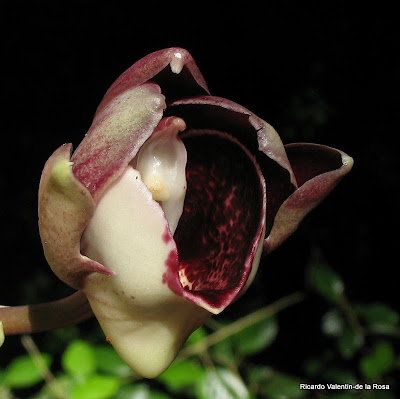My plant of Catasetum
Orchidglade has bloomed many times over the years. The inflorescence normally bears only male
flowers, or infrequently, female flowers.
On very rare occasions the plant has produced intersex flowers. I don’t know what causes this. The phenomenon of intersex flowers has fascinated
and vexed orchid growers and taxonomists for centuries. This account is about one time in which my
plant produced an inflorescence with a few intersex flowers that were an
approximation of the male form.
In this particular inflorescence the first flower opened as
an intersex that was almost completely female except for the sepals, petals and
a bit of the lip. But the rest of the
flowers in the inflorescence were male flowers with shapes that approximated
the shape of a female flower without getting it quite right. Unfortunately all the male flowers were
stripped of their pollen by insects before they opened fully.
But you can see that flowers that were supposed to be quite
flat and wide were instead massive and chubby.
Not two flowers of the inflorescence were exactly alike. The last flowers in the inflorescence had
typical male colors and pollen ejection mechanism but their shapes differed
wildly from both the typical male and female flower form.
The program that makes the flowers male or female went awry
and produced flowers that tried to approximate the female form while preserving
the unique characteristics of the male flower.
The result was flowers that were like an intermediate flower designed by
a committee. Even if the flowers had
opened fully, the distorted shape means that the insect would not have been in
the right position to receive the pollen when the pollen throwing mechanist was
triggered.














No comments:
Post a Comment